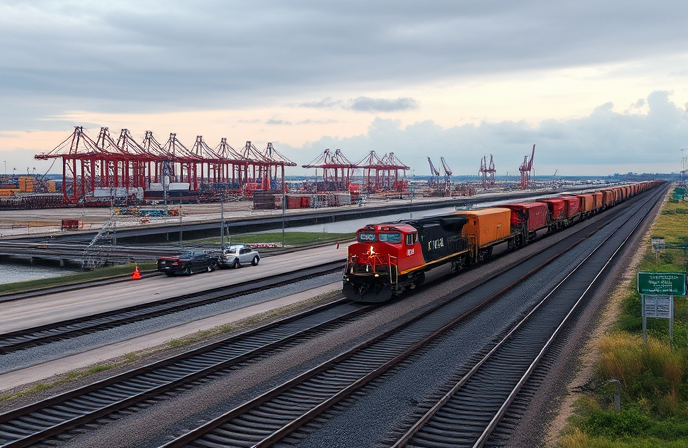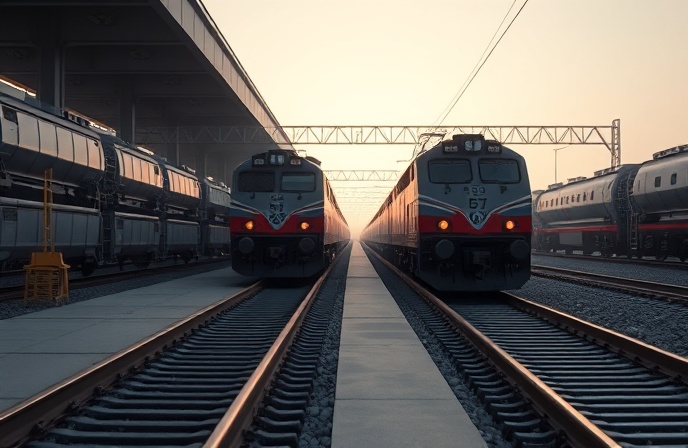Amtrak Expands: 10 More Airo Trains

This article examines Amtrak’s expansion of its rolling stock order with Siemens, focusing on the strategic implications of this decision within the context of the broader modernization and expansion plans of the national passenger rail service. The acquisition of ten additional Airo trainsets represents a significant investment in enhancing Amtrak’s capacity and service offerings, directly responding to unexpectedly high passenger demand. This move reflects a larger trend in the United States towards increased investment in rail infrastructure and a potential modal shift away from road and air travel. The article will delve into the reasons behind Amtrak’s decision, the technological advancements embodied in the new rolling stock, the economic impact of this investment, and the potential future implications for the national rail network. We will also consider the role of government funding and the long-term strategic goals underlying this expansion.
Amtrak’s Capacity Expansion: Responding to Surging Demand
Amtrak’s decision to exercise its contract option with Siemens for an additional ten Airo trainsets is a direct response to unexpectedly high passenger demand. This surpasses initial projections, highlighting the growing appeal of rail travel in the United States. The added capacity provided by these new trainsets is crucial not only for meeting current demand but also for accommodating future growth. This expansion is a key component of Amtrak’s broader modernization strategy, aimed at enhancing service reliability, passenger comfort, and overall operational efficiency. The Airo trainsets themselves represent a technological advancement in passenger rail, incorporating modern features designed to improve the passenger experience and operational performance.
The Technological Advancements of the Airo Trainsets
The Airo trainsets, manufactured by Siemens in California, represent a significant technological leap forward for Amtrak. These modern vehicles offer improved passenger comfort features, enhanced accessibility, and advanced safety systems. The incorporation of these technologies is critical for attracting and retaining passengers, thereby promoting the long-term viability of rail travel as a preferred mode of transportation. The use of modern materials and design principles contributes to the energy efficiency and overall sustainability of the fleet, aligning with Amtrak’s commitment to environmentally conscious operations. The focus on passenger comfort through amenities such as improved seating, enhanced climate control, and modern onboard systems underscores Amtrak’s dedication to a superior passenger experience.
Economic Impacts and Infrastructure Investment
Amtrak’s investment in new rolling stock has significant economic implications, both for the company and for the broader U.S. economy. The purchase is partially funded by the federal Infrastructure Investment and Jobs Act (IIJA), demonstrating the government’s commitment to revitalizing the nation’s rail infrastructure. The construction of the trainsets in California supports American manufacturing and creates jobs within the rail industry. Beyond the direct economic benefits, the expansion of Amtrak services has the potential to stimulate economic growth in communities along the rail corridors, promoting tourism and supporting local businesses. This investment also indirectly supports a modal shift, potentially reducing congestion on highways and in airports, leading to long-term economic efficiencies.
Long-Term Strategic Goals and the Future of Amtrak
Amtrak’s expansion of its rolling stock fleet is not merely a reaction to current demand but a strategic move towards a long-term vision for a more robust and efficient national passenger rail system. The acquisition of these Airo trainsets is a step towards modernizing the entire fleet and expanding service to more underserved communities. This aligns with broader national objectives of promoting sustainable transportation alternatives and reducing reliance on individual car travel and air travel. The long-term goal of a modal shift from road and air to rail requires sustained investment in infrastructure, technology, and operational improvements, all of which are represented in Amtrak’s strategic planning and this expansion of rolling stock. The success of this strategy will depend on continued government support, technological innovation, and the sustained growth of passenger demand.
Conclusions
Amtrak’s decision to purchase ten additional Airo trainsets from Siemens signifies a significant investment in the future of passenger rail in the United States. Driven by unexpectedly high passenger demand, this expansion directly addresses the need for increased capacity and improved service. The Airo trainsets themselves represent a technological leap forward, incorporating modern amenities and safety features designed to enhance the passenger experience and operational efficiency. Furthermore, this investment provides substantial economic benefits, supporting American manufacturing, creating jobs, and contributing to regional economic growth. The project is partially funded by the Infrastructure Investment and Jobs Act (IIJA), underscoring the federal government’s commitment to bolstering the nation’s rail infrastructure. This expansion is not merely a response to current circumstances; it forms a critical component of Amtrak’s long-term strategic goals, aiming for a more robust and sustainable national passenger rail system, promoting a modal shift away from road and air transport, and contributing to a more environmentally conscious and economically efficient transportation network. The successful implementation of this strategy relies on sustained governmental support, consistent technological advancements, and a continued increase in passenger demand. The future of Amtrak, and indeed the future of passenger rail in the United States, appears bright, propelled by innovation, strategic investment, and a renewed national focus on sustainable transportation.




